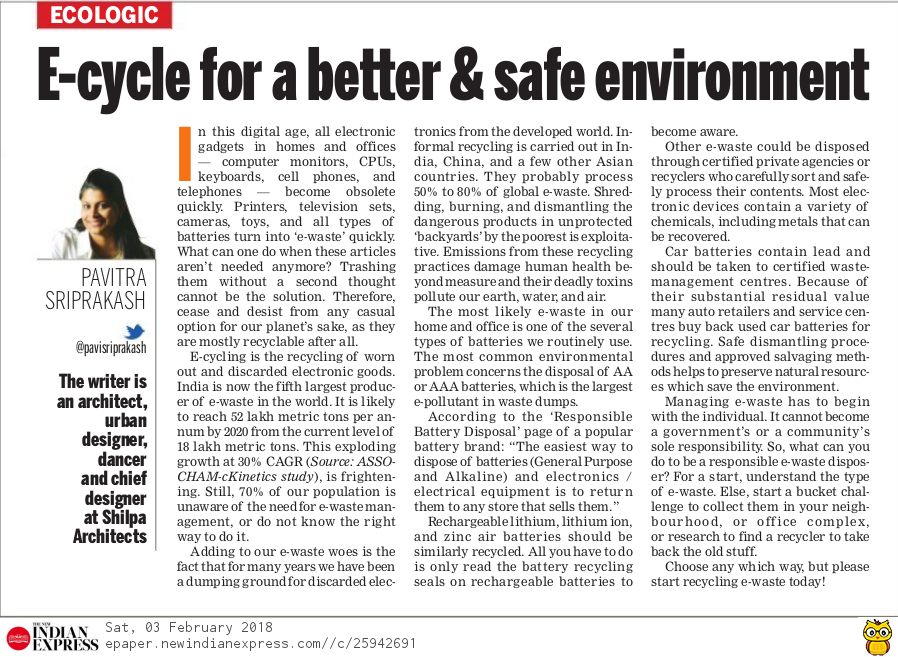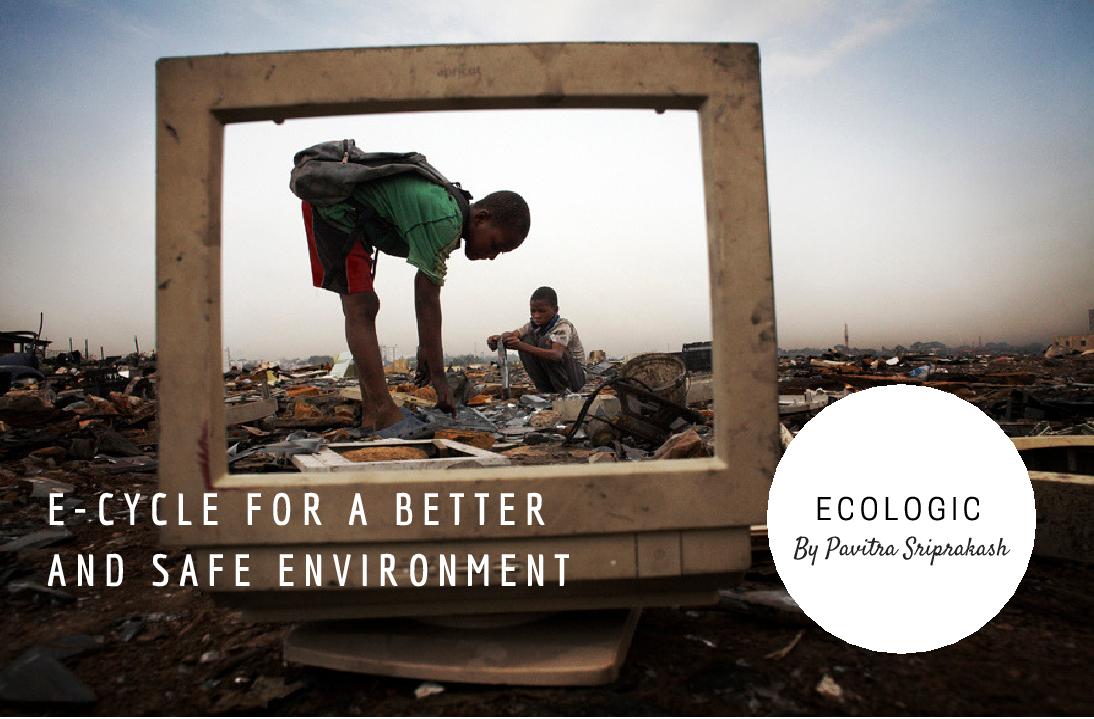Photo Credit: Andrew McConnell / Panos
February 3rd 2018, New Indian Express: ECOLOGIC- Pavitra Sriprakash, the Chief Designer and Director of Shilpa Architects writes on the need for E-Waste Management.
Full Article
In this digital age, all electronic gadgets in homes and offices — computer monitors, CPUs, keyboards, cell phones, and telephones — become obsolete quickly. Printers, television sets, cameras, toys, and all types of batteries turn into ‘e-waste’ quickly. What can one do when these articles aren’t needed anymore? Trashing them without a second thought cannot be the solution.
Therefore, cease and desist from any casual option for our planet’s sake, as they are mostly recyclable after all. E-cycling is the recycling of worn out and discarded electronic goods. India is now the fifth largest producer of e-waste in the world. It is likely to reach 52 lakh metric tons per annum by 2020 from the current level of 18 lakh metric tons. This exploding growth at 30% CAGR (Source: ASSOCHAM- cKinetics study), is frightening.

Still, 70% of our population is unaware of the need for e-waste management, or do not know the right way to do it. Adding to our e-waste woes is the fact that for many years we have been a dumping ground for discarded electronics from the developed world. Informal recycling is carried out in India, China, and a few other Asian countries. They probably process 50% to 80% of global e-waste. Shredding, burning, and dismantling the dangerous products in unprotected ‘backyards’ by the poorest is exploitative. Emissions from these recycling practices damage human health beyond measure and their deadly toxins pollute our earth, water, and air. The most likely e-waste in our home and office is one of the several types of batteries we routinely use.
The most common environmental problem concerns the disposal of AA or AAA batteries, which is the largest e-pollutant in waste dumps. According to the ‘Responsible Battery Disposal’ page of a popular battery brand: “The easiest way to dispose of batteries (General Purpose and Alkaline) and electronics / electrical equipment is to return them to any store that sells them.” Rechargeable lithium, lithium ion, and zinc air batteries should be similarly recycled. All you have to do is only read the battery recycling seals on rechargeable batteries to become aware. Other e-waste could be disposed through certified private agencies or recyclers who carefully sort and safely process their contents.
Most electronic devices contain a variety of chemicals, including metals that can be recovered. Car batteries contain lead and should be taken to certified wastemanagement centres. Because of their substantial residual value many auto retailers and service centres buy back used car batteries for recycling. Safe dismantling procedures and approved salvaging methods helps to preserve natural resources which save the environment.
Managing e-waste has to begin with the individual. It cannot become a government’s or a community’s sole responsibility. So, what can you do to be a responsible e-waste disposer? For a start, understand the type of e-waste. Else, start a bucket challenge to collect them in your neighbourhood, or office complex, or research to find a recycler to take back the old stuff. Choose any which way, but please start recycling e-waste today!
About the author
Pavitra Sriprakash (@pavisriprakash), the Director and Chief Designer of Shilpa Architects, is an Architectt, Urban Designer, Dancer and Artist. She writes a weekly sustainability column for The New Indian Express titled ECOLOGIC.



